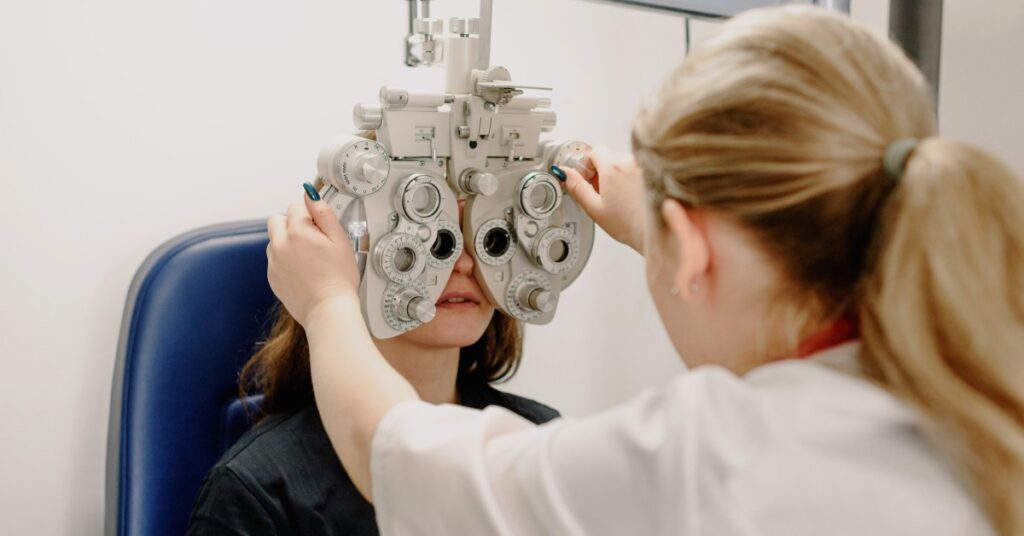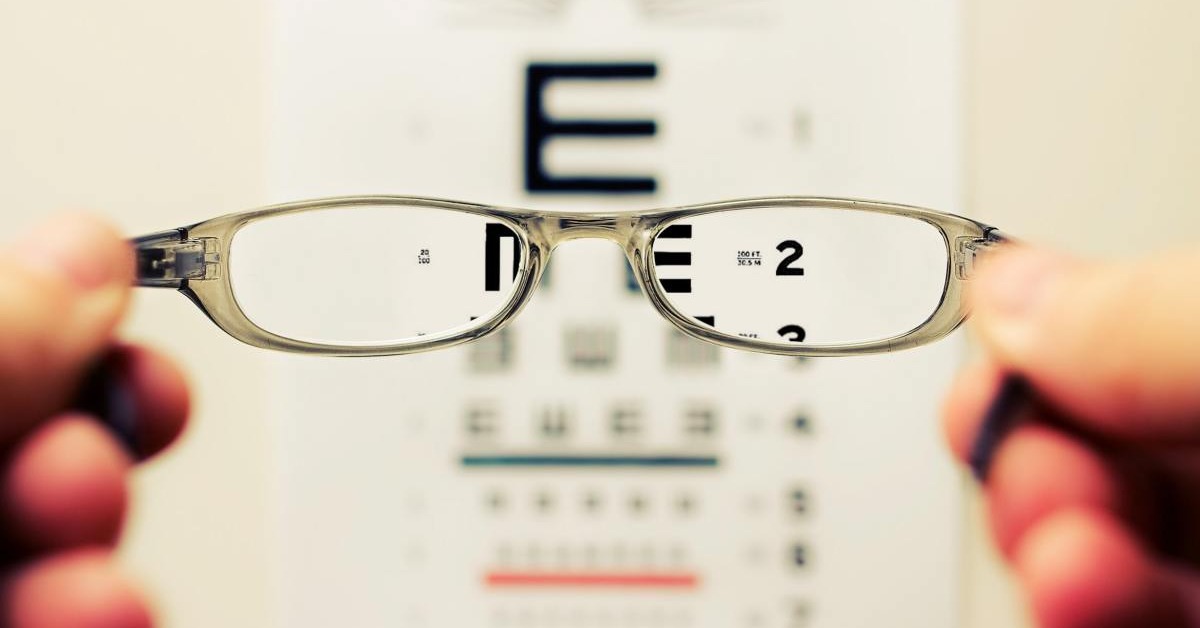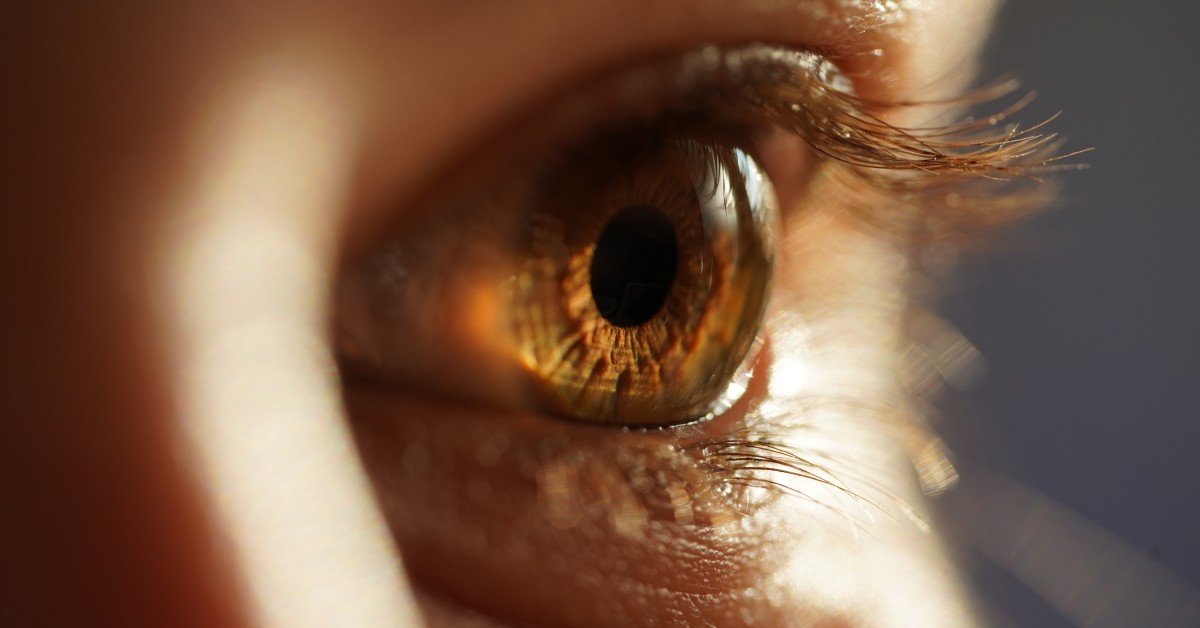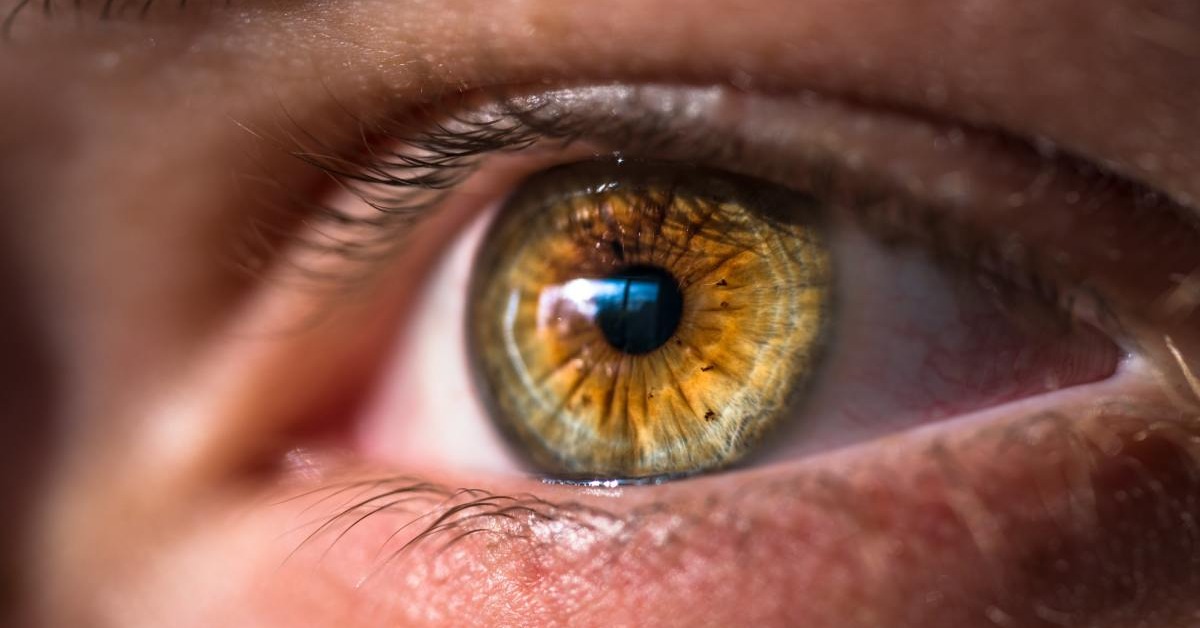
Why Become a Sports Vision Optometrist?
Sports vision optometrists work with patients at all levels, including [...]

Vision screenings can test for blurry vision or other minor vision problems, but detection and diagnosis of common and severe vision impairments and ocular diseases affecting millions of Americans require comprehensive eye exams conducted by optometrists and ophthalmologists. And that’s not all these exams reveal. It turns out the eyes are not only the windows to the soul but also to your overall health.
Most people know that optometrists detect common eye conditions, including near-sightedness, farsightedness, and astigmatism. They also identify eye diseases like glaucoma, cataracts, and macular degeneration. What’s not as commonly known is how optometry exams can also discover systemic disorders, such as high blood pressure, heart disease, diabetes, brain tumors, and other autoimmune diseases
Vision tests are beneficial when screening for visual acuity and symptoms that may lead to early detection of eye abnormalities. However, these basic tests—typically administered by school nurses, family doctors, or other certified healthcare practitioners—do not provide a thorough examination to diagnose eye problems that could progress to loss of vision or blindness. That’s why it’s so important to get your eyes examined regularly by an optometrist.
Read on to learn what optometrists can diagnose and also:
Optometrists are medicine’s leading eye care providers, delivering 85 percent of primary eye and vision care services. They assess, diagnose, treat, and manage eye health conditions and abnormalities.
Optometrists work with other eye care professionals, including opticians and ophthalmologists. Opticians are the customer service professionals who fit you for eyeglasses. Ophthalmologists are physicians and eye surgeons, considered the specialists of the eye industry trifecta. Both optometrists and ophthalmologists have doctoral degrees, but only ophthalmologists have an MD.
Optometrists perform the following functions:
Optometrists must obtain a Doctor of Optometry (OD) degree and proper licensure to practice in the field.
Common eye conditions that optometrists diagnose include refractive errors and ocular diseases. When diagnosing a refractive error, optometrists provide patients with prescribed corrective lens options, such as glasses or contacts. In some cases, an optometrist might recommend laser eye surgery, which can change the shape of the cornea to repair refractive errors.
Comprehensive eye exams conducted by optometrists help assess and detect ocular conditions not visible through a vision screening. This more detailed examination can be an early detection method to prevent eye diseases from progressing into low vision, blindness, or other health problems.
Eye doctors perform various tests during routine eye exams that assess the front of the eye, the back of the eye, and the fluid pressure level inside the eyes. For example, optometrists use the swinging flashlight test to examine the eye, identify any optic nerve defects, and detect severe glaucoma, optic nerve damage, retinal detachment, or severe macular degeneration.
Refractive errors, resulting in distorted or blurred vision, affect more than 150 million Americans. These eye conditions include:
In addition, optometrists can diagnose and treat ocular conditions and diseases, such as:
Optometrists can develop care plans or treatments for patients to manage ocular diseases and avoid further eye infections. Treatment provided by optometrists can consist of non-surgical options, such as medications, eye drops, low-vision rehabilitation, and vision therapy.
It’s known that optometrists can diagnose conditions related to eye health, but not everyone knows how a routine eye exam can also discover non-eye-related diseases. The American Academy of Ophthalmology notes some of the health problems that optometrists may detect through a comprehensive eye exam:
Optometrists can identify various symptoms through comprehensive eye exams that trigger warning signs or early detection of more severe health conditions. For instance, approximately 30 percent of people with diabetes worldwide have retinopathy symptoms, and one-third have vision-threatening retinopathy. Also, individuals with diabetes are two times more likely to develop cataracts.
While optometrists can detect symptoms, they often refer patients to a primary care physician or medical professional for further evaluation and treatment.
Optometrists and ophthalmologists have similar functions when examining, diagnosing, and treating patients with eye abnormalities—however, the educational pathway and scope of practice limit optometrists from performing some advanced functions. Optometrists’ scope of practice includes three areas of authority which vary by state:
Ophthalmologists (eye surgeons) are medical doctors (MDs) with a medical school degree and four to five years of residency training and clinical experience. In contrast, optometrists are healthcare practitioners with a Doctor of Optometry (OD) degree and an optional year of residency training.
Often, optometrists can diagnose an ocular disease but must refer the patient to an ophthalmologist for treatment if it falls out of their authority determined by the State Board of Optometry. For instance, ophthalmologists provide cataract surgery, refractive eye surgery, and treatment for advanced glaucoma, retinal detachment, macular degeneration, and other progressive conditions that optometrists may not have the authority to treat.
All optometrists must have a Doctor of Optometry (OD) degree and a license to practice. However, prospective students begin the first step toward an optometry career with the courses they take in college. Optometry school admission requirements include prerequisite courses in biology, chemistry, mathematics, and other STEM fields. Here’s how to become an optometrist:
During the final year of optometry school, students must complete four clinical rotations to develop hands-on training and patient skills in primary care, advanced care, specialty care, and an elective area of choice. Clinical rotation sites include vision centers, hospitals, community health centers, private practices, and Veteran Affairs medical centers. This on-the-job training prepares optometry students to put their classroom instruction and applied approach to work once becoming licensed practitioners.
Presently, all certified optometry degree programs offer on-campus learning for formal classroom instruction and hands-on clinical training. However, with only 23 accredited optometry programs nationwide, 33 states do not have an optometry program. In addition, though optometry careers are growing in popularity, 1,000 optometry positions remain unfilled nationwide each year, mostly in rural and underserved areas.
As ocular diseases and refractive errors affect millions of Americans annually, the New England College of Optometry (NECO) seeks to become the first OD program to offer a hybrid degree. Dr. Howard Purcell, president and CEO of the New England College of Optometry, notes one goal of the hybrid program: “train people as optometrists who can stay in their hometowns and serve their local communities when they have finished their education.” Students will be able to complete the program remotely, fulfilling residency requirements near where they live.
Optometrists play a vital role in overall health. The more trained optometrists that obtain the necessary skills to examine and diagnose ocular diseases or detect symptoms of systemic disorders, the better the treatment will be to manage patient health and vision care.
(Last Updated on February 26, 2024).
Questions or feedback? Email editor@noodle.com

Sports vision optometrists work with patients at all levels, including [...]

Future health professionals considering the field of eyecare may well [...]

Ocular disease optometrists specialize in the early detection, diagnosis, and [...]

The majority of our population will experience some level of [...]

Admission to the US' 23 accredited Doctor of Optometry programs [...]
Categorized as: Optometry, Nursing & Healthcare